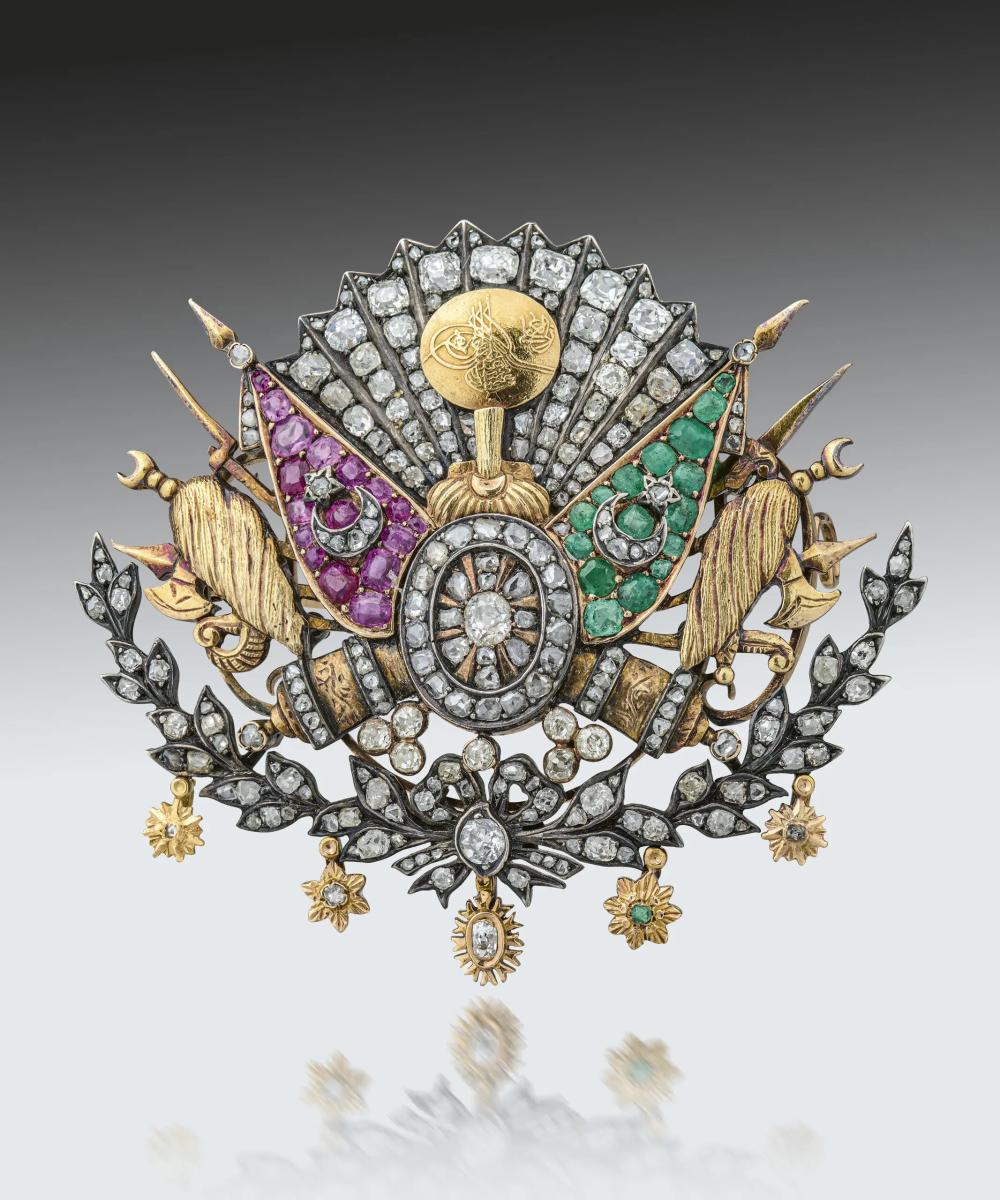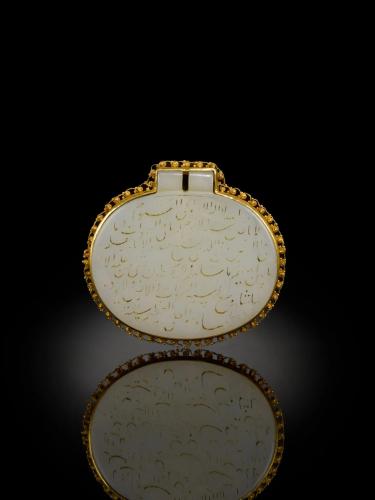

Price on application
This object is eligible for a Certificate of BADA Provenance
The BADA Standard
- Since 1918, BADA has been the leading association for the antiques and fine art trade
- Members are elected for their knowledge, integrity and quality of stock
- Our clients are protected by BADA’s code of conduct
- Our dealers’ membership is reviewed and renewed annually
- Bada.org is a non-profit site: clients deal directly with members and they pay no hidden fees
Ruby, Emerald and Diamond Brooch with the Ottoman Imperial Coat of Arms.
Ottoman Empire.
Produced during the reign of Sultan Abdülhamid II (r. 1876-1908).
Dimensions: 5.2 x 5.6 cm.
Depicting the coat of arms of the Ottoman Empire, with the tughra of Sultan Abdülhamid II (r. 1876-1909) engraved on a gold plaque, composed of various armorial motifs, set throughout with original brilliant and rose-cut diamonds, circular-cut emerald and rubies, each with a rose-cut diamond crescent and star, the garland of laurel leaves accented by a cushion-shaped diamond, the whole suspending a series of enamel and rose-cut diamond drops, representing medals/orders of the empire, mounted in silver and gold.
Ottoman sultans had their own royal monogram or tughra, but only in the second half of the 19th century was an imperial coat of arms produced. The Ottoman coat of arms is composed of motifs that symbolise the power of the state and was therefore a way of conveying prestige. The tughra and turban represent the sultan, weapons the army, the sun, moon and star state power.
The Ottoman imperial coat of arms took shape over a considerable period. One of the earliest examples is the imperial seal commissioned by Sultan Selim III (r. 1789-1807) from an English engraver through the mediation of the British ambassador in Istanbul. Its new design consisting of a tughra, two books on top of one another, a cornucopia, flag, halberd, European style sword, bayonetted rifle, cannon ball and scales was introduced under the reign of Abdülmecid (r. 1839-1861). Later, scales and some weapons were added and it was accepted as the official imperial coat of arms of the Ottoman dynasty in 17 April 1882, under Sultan Abdulhamid II. For further information please see, Motif from the Sadberk Hanım Museum Collection (written by Turgut Saner, Şebnem Eryavuz and Hülya Bilgi), Sadberk Hanım Museum, Istanbul, 2020, p. 58, 59.
A similar ruby, emerald and diamond-set brooch with the Ottoman imperial coat of arms is published in Kent Antiques – Works of Art from the Islamic and Indian Worlds including Orientalist, Modern and Contemporary Paintings 2019-2020, London, 2020, no. 14.
Provenance:
Ex-Private French Collection.
The BADA Standard
- Since 1918, BADA has been the leading association for the antiques and fine art trade
- Members are elected for their knowledge, integrity and quality of stock
- Our clients are protected by BADA’s code of conduct
- Our dealers’ membership is reviewed and renewed annually
- Bada.org is a non-profit site: clients deal directly with members and they pay no hidden fees


